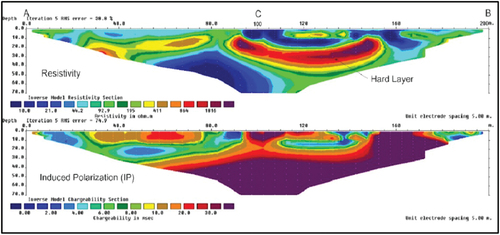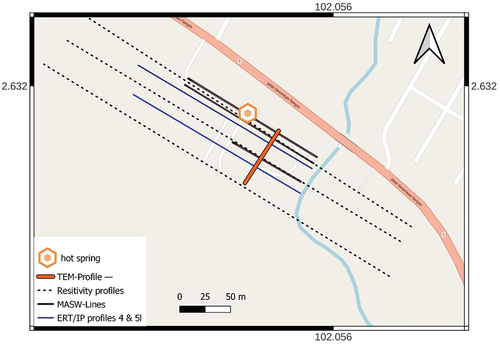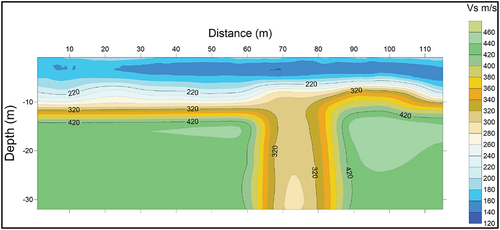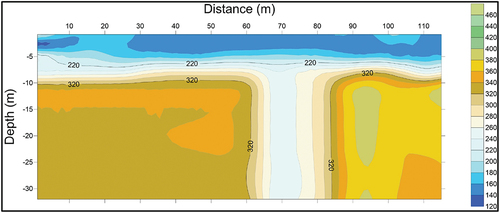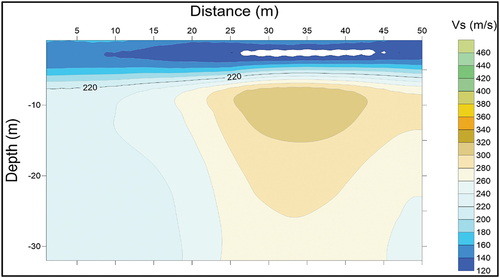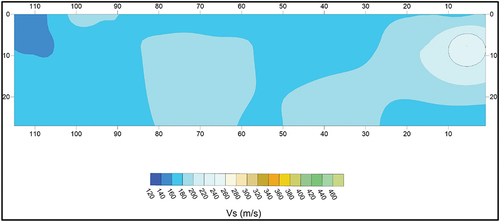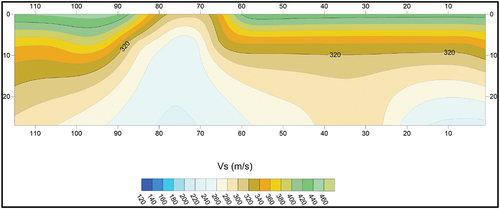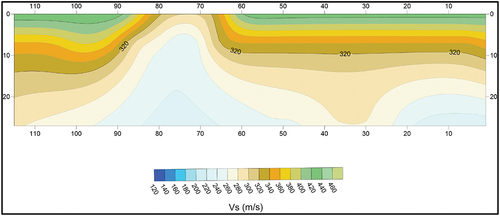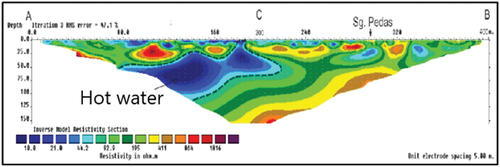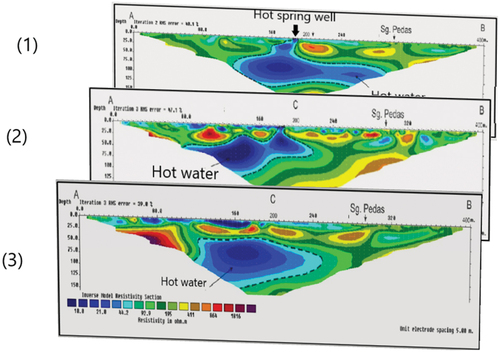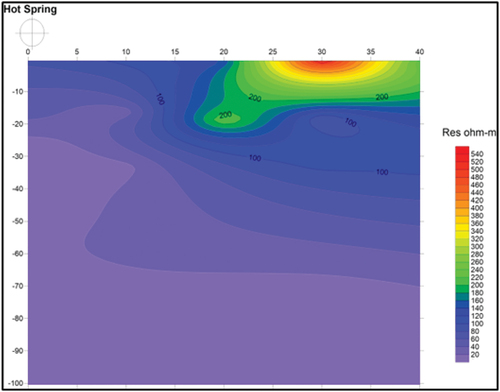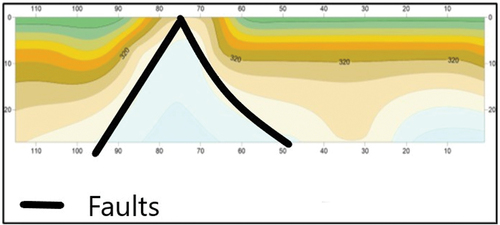Figures & data
Figure 1. Simplified geology of Negeri Sembilan (After Arisona et al. Citation2017) and the layout of the site (lower right).
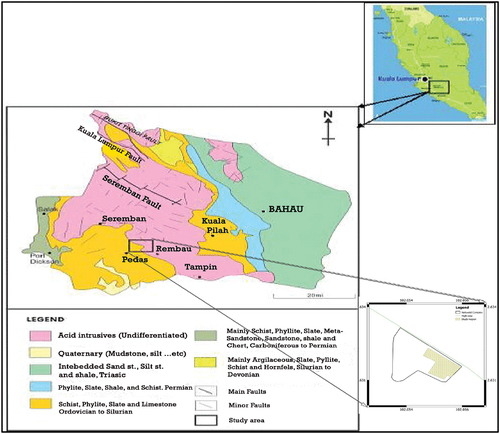
Table 1. Resistivity values of some subsurface rocks and soil materials (after Keller George and Frischknecht Frank Citation1996).
Table 2. Earth materials and chargeability properties (modified after Murali and Patangay (Citation2006).
Figure 13. 2D resistivity (above) and chargeability (below) inversion models of the ERT/IP profile 4.

Figure 14. 2D resistivity (above) and chargeability (below) inversion models of the ERT/IP profile 5.
